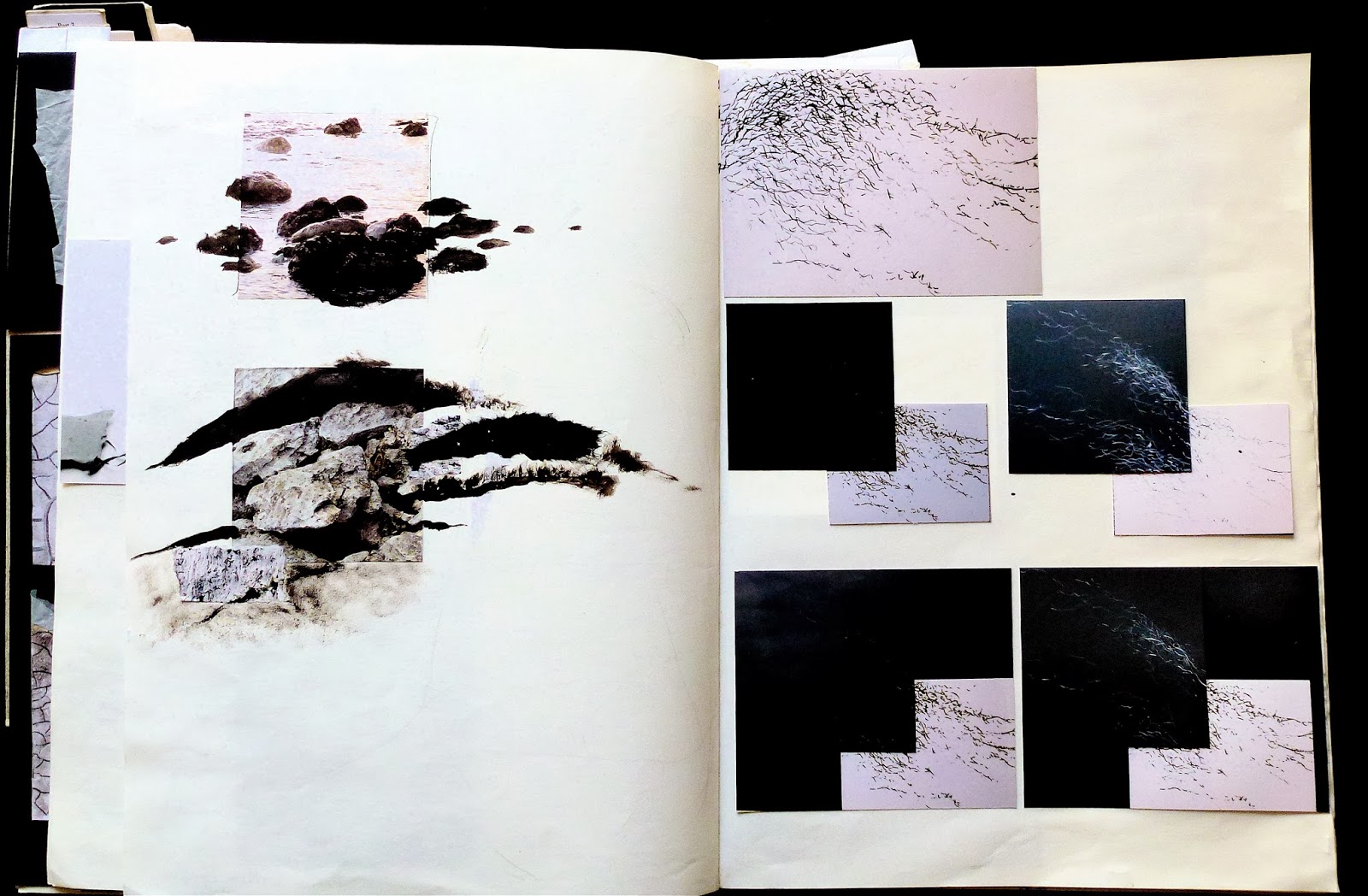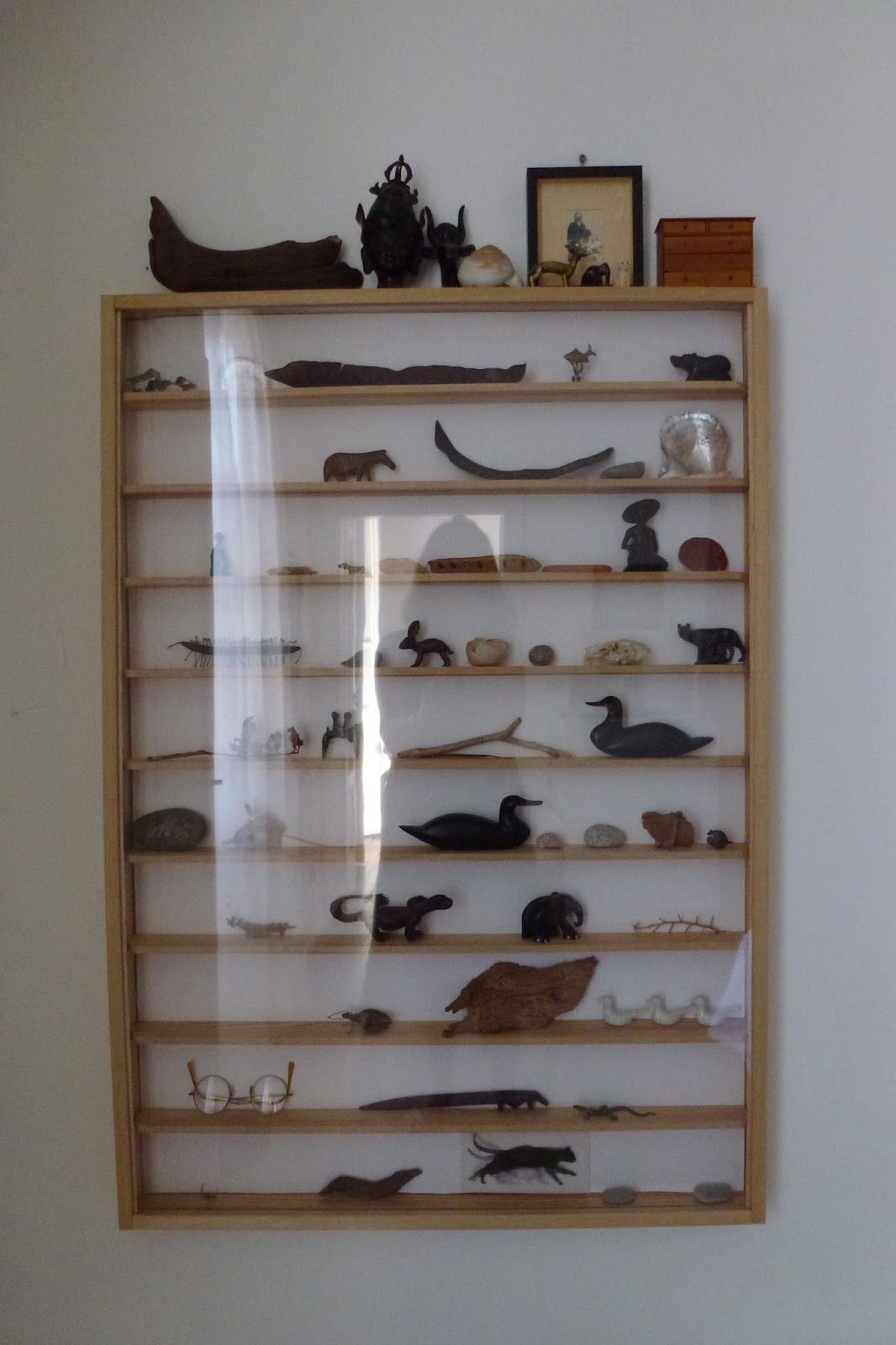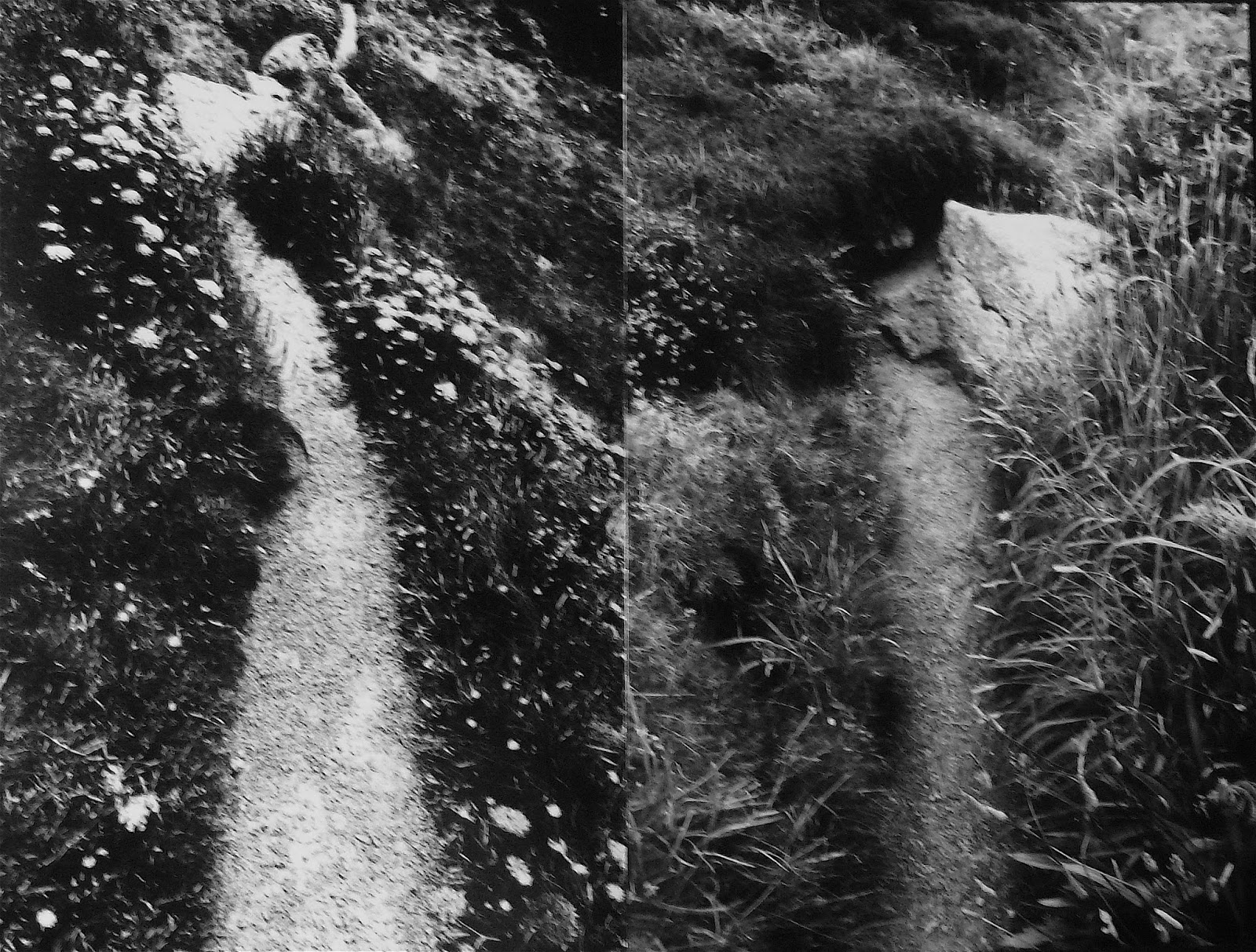Project Found images
Looking through this unit I'm dismayed to find it similar to the previous unit on found text confirming yet again that I didn't understand that this is the established nature of 'mixed media'. I would like to draw, paint and play with a variety of materials but find that once again there is an emphasis on collage.
 |
| Researching mixed media work by Max Ernst- a past master in the technique of compiled found images. |
Trying to work around the first exercises I wonder whether I can use a process of eliminating parts of images rather than accumulating and juxtaposing imagery in a bid to cut down on searching for stuff which I find irritating. I like the idea of starting with the whole image but keeping only some of it in its original form - expressing the remainder as less defined or leaving a space.

Eliminating parts of an image puts me in mind of unfinished work which has interested me in the past. The unfinished 'Regatta' by Spencer reveals his meticulously planned process in making his compositionally complex works. As with most unfinished work you get the feeling that the work is there under the white primer, it just has to be revealed as with those picture books I had as a child where painting water over the surface released the colours. The flatness of the unpainted and painted parts contrast emphasizing the very power of the modulation of tone and colour to create convincing form and 'life'. The plasticity of Freud's paint heightens the white flatness almost as if his subjects lie behind the surface.
'Every block of stone has a statue inside it an it is the task of the sculptor to discover it'
|
Here I have removed parts of the image drawing in the contours of the men...presence and absence....certainly creates focal points.
This ghostly image playing with displacement may be an interesting idea for something.

Responding to the Black and White/Adding line exercises
Again trying to keep away from surrealistic solutions I'm trying to think how to develop my ideas. I have painted washes over a family portrait in a gradation relative to their existence i.e. dead, fading alive.
Thinking about a series of 4 paintings that my cousin's husband did expressing the slow death from motor neuron disease of his wife. The more vibrant abstract motif on the first canvas on the left gradually fades across the works to an mere suggestion of colour on the fourth right hand painting. Corny perhaps but very beautiful and moving.
Thinking about cutting away put me in mind of Klimt. The way the flat patterned areas clothe the more modeled parts of faces and bodies echoes a medieval style and very like orthodox church icons where the gold raised covers protect the flatly painted madonna and child.
Trying out a few collaged/photo montaged compositions in response to the Black/White exercise.
|

Painting 1 Collage and Acrylic on paper A3
Painting 2 Collage and Acrylic on paper
Painting 3 Collage and Acrylic on paper A3
Of these 3 paintings I think the middle one is the most successful. The mix of shiny magazine paper and matt acrylic paint + buckled surface does detract from the finished image but this method of working helped develop composition, colour and texture.
Project
History,intimacy and narrative
The two pages of my workbook below show photographs of sections of a wall in my kitchen. I am a natural collector of bits and pieces and often make arrangements in boxes as did Cornell. Many contempory artists such as Damien Hirst, Belinde de Bruyclere, Gavin Turk, Louise Bourgeois, Doris Salcedo have used display cabinets and space frames. Influences for this trend may have come from display cabinets in museums housing untouchable valuable relics to fascinating stuff in cabinets and jars used to store items of natural history exist in the public conscious. The enclosed space also acts as an isolation chamber separating the contents from surrounds as in a 3D frame. Much of modern art can only function in the white stark spaces of the the gallery and it may be said that the art is the white space.

Playing around with apple boxes
I wanted to do something with religion and make an altar piece with a predella which usually enlarges the story being depicted on the larger panels above. I know that artists who have worked in this way like Cornell and Peter Blake have an enormous collections of bits and pieces and sadly I do not so it's been a bit of a struggle to find relevant stuff let alone select to the point of establishing a message. Nevertheless nothing comes from nothing so I suppose what I have put together is a personal statement of sorts.
Below
Not done for the course but a couple of arrangements I have 'on the go' around my flat.
Project Repeated and multiple images
I have made compositions of a number of photographs that I took whilst walking along the coastal paths of Cornwall. I've had it in mind to work with them in this way since I took them last summer and am pleased to have this chance to record my juxtopostions. I should learn how to develop them further using Photoshop but here the photos are simply butted one to another. I am continuing the coastal path trail in August and thought to take some more photos with the view to using them in the expanded painting project in the next unit.
N.B I spent quite some time working on compositions to do with the disconnected nature of dreams but didn't manage to resolve anything worth recording here.
Assignment 3
In June I went to the RCA degree shows in Kensington and Battersey and came back inspired and excited by all I saw but in particular by some of the painting work. Wanting to do draw and paint I've drawn on the feeling/experience of walking on paths, head down watching where to tread.


Not particularly linked but I also wanted to do some drawing.
3 paintings (with work in progress) for Assignment 3
Painting 1 100x100 cm oil on canvas
Painting 2 (with stages) 40x50 cm oil on canvas
Painting 3
60x80 cm Oil on canvas (unfinished)
N.B. unfinished















































































































